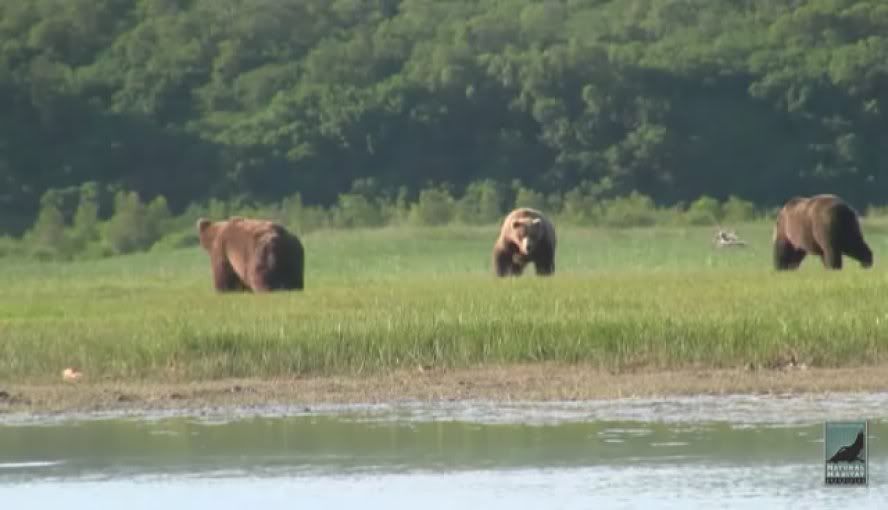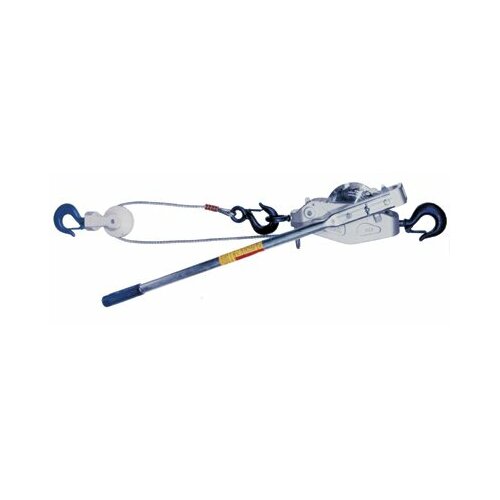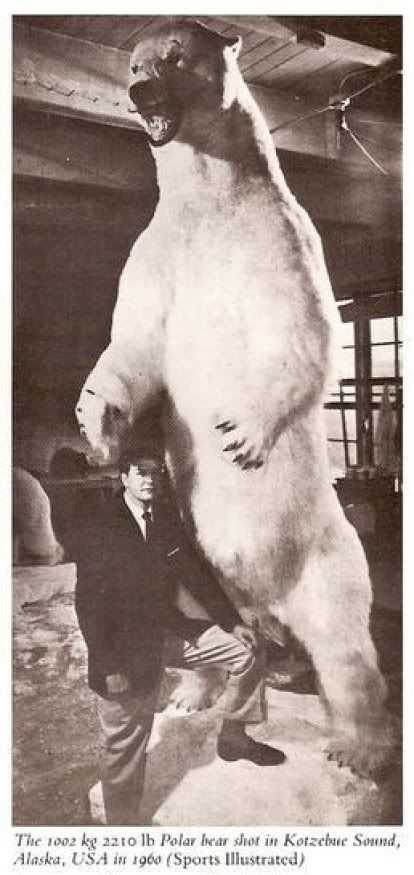|
|
Post by grrraaahhh on Jul 23, 2011 6:08:18 GMT -9
|
|
|
|
Post by brotherbear on Nov 25, 2011 11:24:27 GMT -9
Exactly what would be involved if researchers decided to weigh fully adult male and female brown bears from North America, Europe, and Asia in search of both an average weight and to attempt to discover the maximum size limit of brown bears?
|
|
Deleted
Deleted Member
Posts: 0
|
Post by Deleted on Nov 25, 2011 23:06:59 GMT -9
Well, polar bears which are too heavy to be lifted by scientists' hoistswere estimated to be 800 kgs.
This being said, I believe the scientist might use roughly the same method they have used to measure polar bears to do the same with brown bears?
Whats your opinion brother bear?
|
|
|
|
Post by brotherbear on Nov 26, 2011 0:39:35 GMT -9
I believe that it would take some heavy expensive equipment, perhaps cranes or helicopters. I believe that the cost of such an undertaking would be too high. Plus the fact that all of this equipment must go to where the bears are located. It would be a huge expensive undertaking; in my opinion.
|
|
|
|
Post by grrraaahhh on Nov 28, 2011 6:34:58 GMT -9
Brotherbear, it's been a busy holiday period, I will respond to your post later.
|
|
|
|
Post by grrraaahhh on Nov 30, 2011 17:55:08 GMT -9
Brotherbear, between your equipment description and the OP photos, I think the equipment part of your question is more or less answered. Try to remember, biologist have to carry their equipment too. Some areas for example like the open polar north are easier to access (think helicopter) but other areas like dense forest regions are not - here, the risk to biologists/conservationists is REAL (lives have been lost). How does one trap a bear? Foot-snare? Tranquilizer? Even if that part is successful then ask yourself (remember the clock is ticking) how many people are needed to weigh a mature grizzly boar 600-800 lbs or a mature Kodiak or Peninsula brown bear who average 1000 lbs? It's not too hard to see why chest girth, paw width, & substitute body mass estimates are made. Moreover, scientist are concerned with other conservation issues; reproductive health, genetic info, blood work, disease, diet, habitat threat, radio collaring the bear, etc. A mature polar bear boar will average about 500 kg - some of the larger polar bears 800 kg plus estimated were too big to weigh even with helicopter assistance. Big inland or mature brownies/grizzlies did not reach their size by being dumb, they are harder to trap and monitor. Camera traps or barb wire hair analysis and their like are popular less invasive ways to study bears. There's a lot more one could say but I think you get the gist. Trapping bears (in this case foot-snare) is dangerous work:Tranquilizing bears is also risky ....Lets move to the Alaska peninsula brown bears....  I have yet to share the data, but I have the ADF&G technical report info showing mature peninsula boar brownies to be averaging 1000 lbs (spring weight).  Moving on to Kodiak Island.....again, we are talking about BIG bears. From my review of the literature, people maybe surprised to know that there is not some sort of regular weight measurements of varying bear populations (it's not like a census report folks) which is not surprising when you consider how precious conservation funding is needed for other pressing bear related research. To finish up with understanding weight data, often we read about weight range - keep in mind with the exception of some exceptional bears, the smaller the weight range for a set of adult bears tend to be young adult bears while the heavier set of bear weight figures correlate often with the older mature or prime bears. Of course weight range will vary depending on food input and time of season. FWIW, density information should be factored in all of the online 'weight' cough/cough discussions meaning give me data where there are more bears not the sparse few. I will say it again, generalizing bears is not a constructive way to understanding them (bears are very complex) and as far as the whole weight thing goes some debates are just pointless. Bears have the genetic capacity to grow very large (even where we find large or mature bears; trophy hunting is another problem) but where food resources is poor and habitat threat is severe smaller form of bears also exist. |
|
|
|
Post by grrraaahhh on Dec 1, 2011 13:18:03 GMT -9
RE: Body MassText Extract:"Reliable data on measurements of grizzly bears exist for populations in the Brooks Range of Alaska (Rausch 1963), the Yukon Territory (Pearson 1975), and the Yellowstone ecosystem (Craighead and Craighead 1973b). Weights of large adult animals from the Yellowstone ecosystem ranged from 158 to 204 kg for females, and from 363 to 500 kg for males. Average weights and physical dimensions by age classes of Yellowstone grizzly bears are given in table 25.1 (J. J. Craighead unpublished data)." Craighead, J. J., and J. A. Mitchell. 1982. Grizzly Bear. p. 515-556 in J. A. Chapman and G. A. Feldhamer (eds.). Wild Mammals of North America: biology, management and economics. John Hopkins Univ. Press, Baltimore, MD. With the successful reintroduction of wolves to YNP grizzly bear meat input has increased to 80% for older males so it stands to reason body mass numbers have also seen an increase. Moving on to polar bears:" Size and Weight. The polar bear is the largest of the extant bears (DeMaster and Stirling 1981). In Hudson Bay, the mean scale weight of 94 males >5 years of age was 489 kg. The largest bear in that group was a 13-year-old, which weighed 654 kg (Kolenosky et al. 1992). The heaviest bear we have weighed in Alaska was 610 kg, and several animals were heavy enough that we could not raise them with our helicopter or weighing tripod. Some animals too heavy to lift have been estimated to weigh 800 kg (DeMaster and Stirling 1981)." Armstrup, C. Steven. 2003. Polar Bears (Chapter 27) in Wild Mammals of North America. "When fully grown, adult male polar bears in Canada range in weight from 450-550 kg and most adult females weigh between 160-270 kg." Stirling, Ian, Wendy Calvert, and Dennis Andriashek. 1980. Population ecology studies of the polar bear in the area of southeastern Baffin Island. [Ottawa]: Canadian Wildlife Service. If people are interested in body mass data please review the following information from the EXTANT BEAR PROFILES (IN DEPTH) section: individual bear profiles or threads like Arctic & Northernmost Grizzly Bears (N.America) and the North American Interior Grizzly Bears. Far from comprehensive, these threads/posts provide a sampling of technical body mass bear data. Maybe later in this thread information on weighing tripods (equipment) can be provided but then again I think some things are self explanatory:  Above: The weighing of a female polar bear. taos-telecommunity.org/epow/EPOW-Archive/archive_2009/EPOW-090713.htmIn the absence of the actual field data access, the statements of prominent biologists are highly valued. When someone like J. J. Craighead (Yellowstone National Park), Ian Stirling (Polar Bears), or V.N. Gordienko (Kamchatka) provide statement data rest assured the information is credible.
|
|
|
|
Post by warsaw on Dec 2, 2011 13:27:20 GMT -9
|
|
|
|
Post by grrraaahhh on Dec 13, 2011 18:31:59 GMT -9
  Tripod Tripod Come Along Come Along Carabiner Carabiner Crane Scale Crane Scale   |
|
|
|
Post by warsaw on Dec 31, 2011 3:35:11 GMT -9
Brotherbear, between your equipment description and the OP photos, I think the equipment part of your question is more or less answered. Try to remember, biologist have to carry their equipment too. Some areas for example like the open polar north are easier to access (think helicopter) but other areas like dense forest regions are not - here, the risk to [youtube]biologists/conservationists is REAL (lives have been lost). How does one trap a bear? Foot-snare? Tranquilizer? Even if that part is successful then ask yourself (remember the clock is ticking) how many people are needed to weigh a mature grizzly boar 600-800 lbs or a mature Kodiak or Peninsula brown bear who average 1000 lbs? It's not too hard to see why chest girth, paw width, & substitute body mass estimates are made. Moreover, scientist are concerned with other conservation issues; reproductive health, genetic info, blood work, disease, diet, habitat threat, radio collaring the bear, etc. A mature polar bear boar will average about 500 kg - some of the larger polar bears 800 kg plus estimated were too big to weigh even with helicopter assistance. Big inland or mature brownies/grizzlies did not reach their size by being dumb, they are harder to trap and monitor. Camera traps or barb wire hair analysis and their like are popular less invasive ways to study bears. There's a lot more one could say but I think you get the gist. Thank you grrraaahhh.Very vell said.    www.youtube.com/v/xgyqXlr2jSI&hl www.youtube.com/v/xgyqXlr2jSI&hlDr.Djuro Huber (http://djurohuber.ble.pl/) with radiocollared male brown bear with extremely poor dental condition:) .This bear weighed 250 kg and had broken canine tooth. www.ldklek-ogulin.hr/ogrlica-medvjedu-2009.php |
|
|
|
Post by warsaw on Jan 1, 2012 4:35:43 GMT -9
|
|
Deleted
Deleted Member
Posts: 0
|
Post by Deleted on Jan 1, 2012 4:37:55 GMT -9
One more thing, how did they weigh the largest polar bear weighing 1000kg since, the bears weighing 800kgs are only estimated being too heavy to carry?
|
|
|
|
Post by warsaw on Jan 1, 2012 5:37:38 GMT -9
One more thing, how did they weigh the largest polar bear weighing 1000kg since, the bears weighing 800kgs are only estimated being too heavy to carry? Maybe body was then divided into pieces ?It's just an idea. |
|
|
|
Post by grrraaahhh on Jan 1, 2012 15:00:29 GMT -9
One more thing, how did they weigh the largest polar bear weighing 1000kg since, the bears weighing 800kgs are only estimated being too heavy to carry? The same record (below) polar bear from the 1962 Seattle World Fair.  The largest polar bear ever recorded was shot in Kotzebue Sound, Alaska in 1960 weighing a grizzly 1002 kilograms or 2,210 pounds and stood 11 feet 1 1/2 inches 3.39m in height. Likely, the bear was transported then measured and weighed. FYI, Guinness Book of World Records (1983) text extract: "That is possible for polar bears to exceed 2,000 lbs 907 kg has also been confirmed by Ognev (1962), who says that the some of the old male bears killed on the Taimyre Peninsula, NW Siberia have scaled as much as 60 pood (979 kg 2158 lbs) and yielded up to 12 pood (196 kg 432 lbs) of fat." |
|
|
|
Post by richardrli on Jan 2, 2012 3:02:35 GMT -9
The figure of 1002kg I believe was never confirmed/verified, I don't it actually weighed that much.
|
|